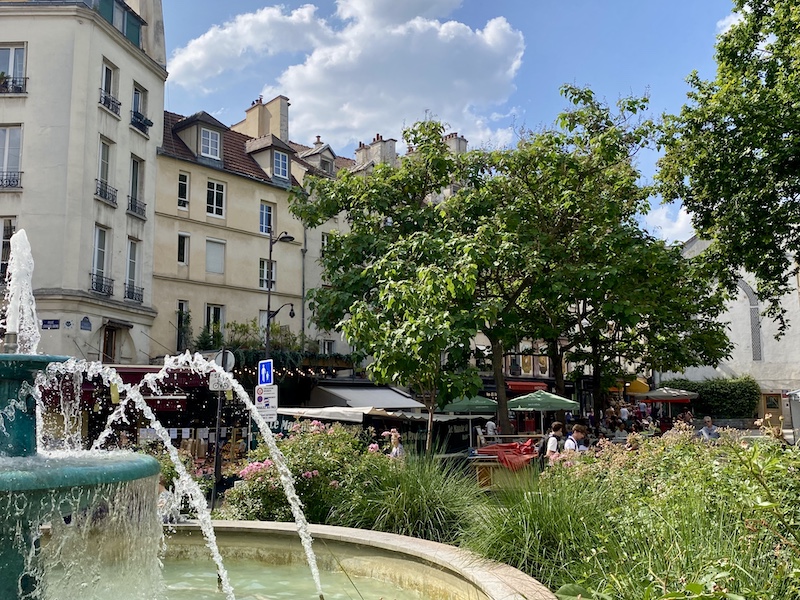As another summer heats up Paris, staying cool indoors is a growing concern for residents and second home buyers alike. At 56Paris, air conditioning is one of the most frequent requests we hear from our international clients, particularly those purchasing in historic buildings where installing traditional systems can be complex.
During a recent property search, we came across a brilliant urban project that deserves wider attention: Fraîcheur de Paris, the City of Paris’s expanding underground cooling network. One of our search clients is now lucky enough to purchase an apartment in a building planning to connect to this cutting-edge system—a timely discovery we’re excited to share.
What Is Fraîcheur de Paris?
The system is managed by Fraîcheur de Paris, a semi-public company jointly owned by the City of Paris and ENGIE, a major French energy provider. It operates using underground infrastructure originally developed by RATP (Régie Autonome des Transports Parisiens), the public transport authority for the Paris metro and bus network.
Fraîcheur de Paris has been in place since the early 1990s. But it’s now entering a new phase of ambitious growth.
Currently, the system spans over 100 kilometers of underground piping and supplies cooling to more than 800 buildings, including:
* The Louvre Museum
* Galeries Lafayette
* The French Parliament (Assemblée Nationale)
* Numerous hospitals, schools, and public buildings
The water, chilled to just a few degrees Celsius, is circulated through the city’s basements and technical rooms, absorbing heat before being returned and cooled again.
How Does It Work?
The process starts with water drawn from the Seine River, which is cooled in underground stations—some as deep as 40 meters below the surface. During off-peak hours, ice or chilled water is stored in basins to meet daytime demand.
This chilled water is then circulated through a loop system. Buildings connect to the network via heat exchangers, which allow them to cool indoor air without using traditional air conditioning units.
The advantages?
* Up to 50% more energy-efficient than conventional AC
* 90% fewer refrigerant gases
* Entirely powered by renewable energy since 2013
* Carbon-neutral since 2018
It’s not only greener—it’s quieter, less visually intrusive, and more effective in protecting sensitive spaces such as museums and hospitals from heat stress.
Olympic Legacy, Year One
The 2024 Olympics put Fraîcheur de Paris in the international spotlight. Several Olympic venues—such as the Grand Palais and various hotels—benefited from the system to maintain comfortable temperatures while limiting energy consumption.
With the city in the global eye, the cooling network became an emblem of Paris’s broader climate strategy, alongside expanded pedestrian zones, tree planting initiatives, and low-emissions transport policies.
Now, in summer 2025, the system continues to prove its value, with more institutions and public buildings requesting access. And for the first time, a push toward residential buildings is gaining traction.
Cooling the Future: Expansion Plans
The City of Paris aims to triple the network’s reach by 2042. That includes:
* Extending to 250 kilometers of underground piping
* Connecting over 3,000 buildings
* Building 20 new cooling stations and 10 additional storage sites
To minimize disruption, expansion will use existing telecom tunnels, including those owned by Orange. This allows new branches of the network to be installed with minimal street closures—key in a densely built city like Paris.
For the residential sector, this opens a new frontier. Though multifamily ownership structures and renovation requirements can slow progress, pilot projects in co-owned buildings are already underway, particularly in neighborhoods like the 15th and 17th arrondissements. And interest is clearly growing beyond these early zones: one of our clients is currently purchasing an apartment in the center of the 7th arrondissement, in a building that plans to connect to the Fraîcheur de Paris network—an exciting sign that the system is gaining traction in some of Paris’s most established and historic districts.
Why It Matters for Paris Property Owners
For investors and homeowners in central Paris, Fraîcheur de Paris represents more than infrastructure—it signals a new layer of urban comfort and value:
* Reduced need for individual air conditioning units (especially important in buildings with preservation restrictions)
* Lower energy bills over time
* Improved property resilience as heatwaves become more frequent
* It also aligns with growing buyer demand for sustainable living solutions, particularly among international clients.
While not yet widespread in private residences, inclusion in or proximity to the district cooling network could soon become a selling point—much like fiber optics or geothermal heating systems are today.
Looking Ahead
As climate adaptation becomes a top priority for cities worldwide, Paris’s approach offers a powerful example of invisible yet impactful innovation. And while the chilled pipes of Fraîcheur de Paris may be hidden beneath our feet, their influence on how we live, invest, and stay comfortable in the capital is only growing.
For those considering property investment in Paris, the presence of such long-term infrastructure projects reflects not only the city’s sustainability goals but also its ability to deliver quiet luxury and environmental foresight in equal measure.
At 56Paris, we’re already seeing this play out in real time with our international search client who is currently purchasing an apartment in a building that is planning to connect to Fraîcheur de Paris. It’s an exciting opportunity to witness the benefits of this system firsthand—stay tuned as their project evolves or contact us for more information.
